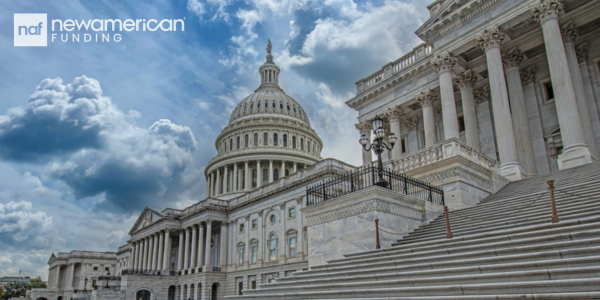Housing News, Videos
How Long Does Transitory Last?
October 7, 2021
Hello, everyone, and welcome back to the Mortgage Rundown. Today we're talking about what's happening in the capital markets.
You may have noticed over the last couple of weeks and possibly the last couple of months, mortgage rates are moving up just a little bit. So why is that happening? First and foremost, the elephant in the room right now is inflation. So, the first chart on your screen is CPI. This is not necessarily the FOMC’s preferred inflation measurement, but as you can tell, inflation has moved higher and higher and higher, and now is sitting well above what their normal range has been.
The second chart on your screen is PCE—that's personal consumption expenditures. That is the FOMC preferred inflation measurement. Same thing as CPI…we're seeing it well above the two percent targeted rate, and it's still sitting very high. Now the Fed is telling us that this is transitory, that this is going to go away. Supply and demand economics are eventually going to be the right size, with supply coming up and demand being stabilized, and inflation will come back down.
The problem really is the psychology of inflation in terms of the minds of the consumer, the price of goods and services go up and up and up. Inflation is here to stay. And so, what that ends up doing is consumers start expecting higher prices, which then means producers start increasing prices. They start to start to add in the margin. And that's where this argument is between the FOMC that says it's transitory, that'll go away—and really, the real world that says it doesn't feel like it's going to go away; It feels more permanent.
Let's add one more dimension to that. Let's talk about the spending plan. The spending plan at some point, whether it be one and a half trillion all the way up to three and a half trillion, at some point is going to be put into effect, right? There's going to be some passage of legislation at some point. We don't necessarily know when. But it looks like it's going to happen pretty soon. Now if you do that, you're going to add more and more demand. There's more cash being put in the system and so now there's more demand. That could push prices even higher.
From my perspective, what I would expect is once that spending plan is passed, then a combination from the FOMC really has to come in. They have to reduce their purchases of mortgage-backed securities. They have to reduce their purchases of long-term treasuries, and they have to just let the economy take off on its own with this spending plan. I would say the second legislation is passed, expect to see rates move higher.
Now, if for some reason the spending plan doesn't go through and the economy starts stalling, you could see a whipsaw the other way. We could see the fact that the Fed will have to increase a combination or leave it in, and rates could just go right back down. But really, I would say 70+ percent chance rates are going to move higher after the spending plan is passed.
That's that everyone from the capital markets this week. Thank you all for watching and have a great day.






 Smart Moves Start Here.
Smart Moves Start Here.